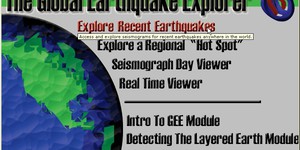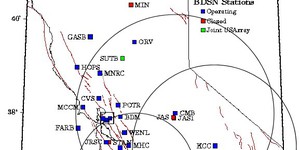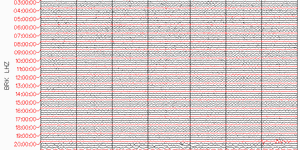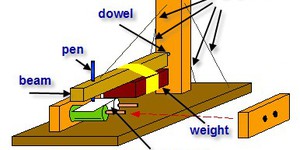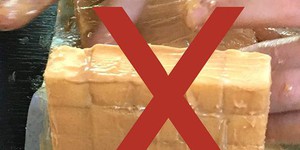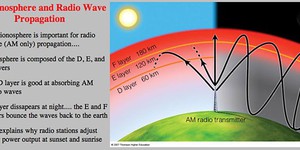Others Like “Locating an Earthquake Using a Global Seismic Network” (top 20 results)
|
When an earthquake occurs, seismic shock waves travel out through the earth from the source of the event. The shock waves travel through the earth or along the Earth's surface, and can be recorded at remote monitoring stations. Some of the waves that travel through the earth are blocked or refracted by the Earth's liquid core, which means that monitoring stations located certain distances from the earthquake do not detect these waves. This creates a "seismic shadow" that you can use to…
Read more
When an earthquake happens, how are scientists able to determine the original location of the quake? In this project, you'll use archived data from a network of seismometers to find out for yourself. You'll create your own seismograms from the comfort of your own computer with an easy-to-use webpage interface. Then you'll analyze your seismograms to determine the distance of the quake from each seismometer station. By mapping your analyzed data, you will be able to determine the location of the…
Read more
Have you ever wondered how fast a seismic wave from an earthquake travels? In this geology science project you can figure this out using historical seismograph data that you can collect from the comfort of your own computer. You will use a web interface to a network of seismometers run by the Northern California Earthquake Data Center, at the University of California, Berkeley. From the seismograms you make, you will be able to measure the time it took for the seismic waves to travel from the…
Read more
If you live in an area where earthquakes happen, you might be especially interested in this science project. You will learn how to build your own seismograph and how to use it to detect ground motion.
Read more
Did you know that waves travel through the Earth's crust all the time? One major source of these waves is earthquakes, although ground motion can also be caused by something man-made, such as a mine blast or nuclear explosion, or other natural events, such as landslides or volcanic activity.
How does an earthquake cause these waves? The entire outer shell of the Earth, known as the lithosphere, is made up of tectonic plates that are constantly moving. There are seven or eight large…
Read more
Have you ever been in an earthquake? What did it feel like? Did you jiggle back and forth? Up and down? Was there a jolt? Or a rolling motion? Come build a house Hansel and Gretel would love to eat, a special table to shake it on, and see how different soil types can amplify shaking.
Read more
Visit the USGS Earthquake Hazards Program to find out about global patterns of earthquake incidents (USGS, 2006). Can mapping earthquakes help identify fault lines? They also have a list of science fair project ideas. Another great resource for earthquake-oriented science fair projects is by Jeffery Barker (Barker, 1994). Build a model to study the forces of an earthquake using sandpaper-covered blocks. What are the forces involved? How are stress and friction in balance along a fault line?…
Read more
Have you ever wished you could talk to an astronaut on board the International Space Station? You're probably
thinking "yeah, like NASA would ever let you do that!" Actually, they will! The International Space Station (ISS)
is equipped with its own HAM radio station. The
ISS HAM radio station allows astronauts,
cosmonauts, and space mission specialists from different nations who are on board the space station to talk
to people back home on Earth. Anyone with an amateur radio license is…
Read more
What do the radio, TV, radio controlled cars, and cell phones all have in common? They all use invisible waves to transmit information. Find out which materials block radio waves, and which materials allow radio waves to pass through by doing this experiment.
Read more
You can study hazards that affect coastal areas. What geological forces cause a tsunami? A tsunami (Japanese for 'harbor wave') is a wave generated by an undersea earthquake, landslip, or volcanic eruption. You can demonstrate what causes a tsunami by simulating an undersea earthquake with a water table. How does the depth of water effect the height of the wave? Do different slopes of bottom change the speed of the wave? Visit the USGS Coastal and Marine Geology Program to find out about…
Read more
|
Explore Our Science Videos
Extract Iron from Cereal– Science Project
Build A Wall Marble Run!
Make a Whirlybird from Paper


